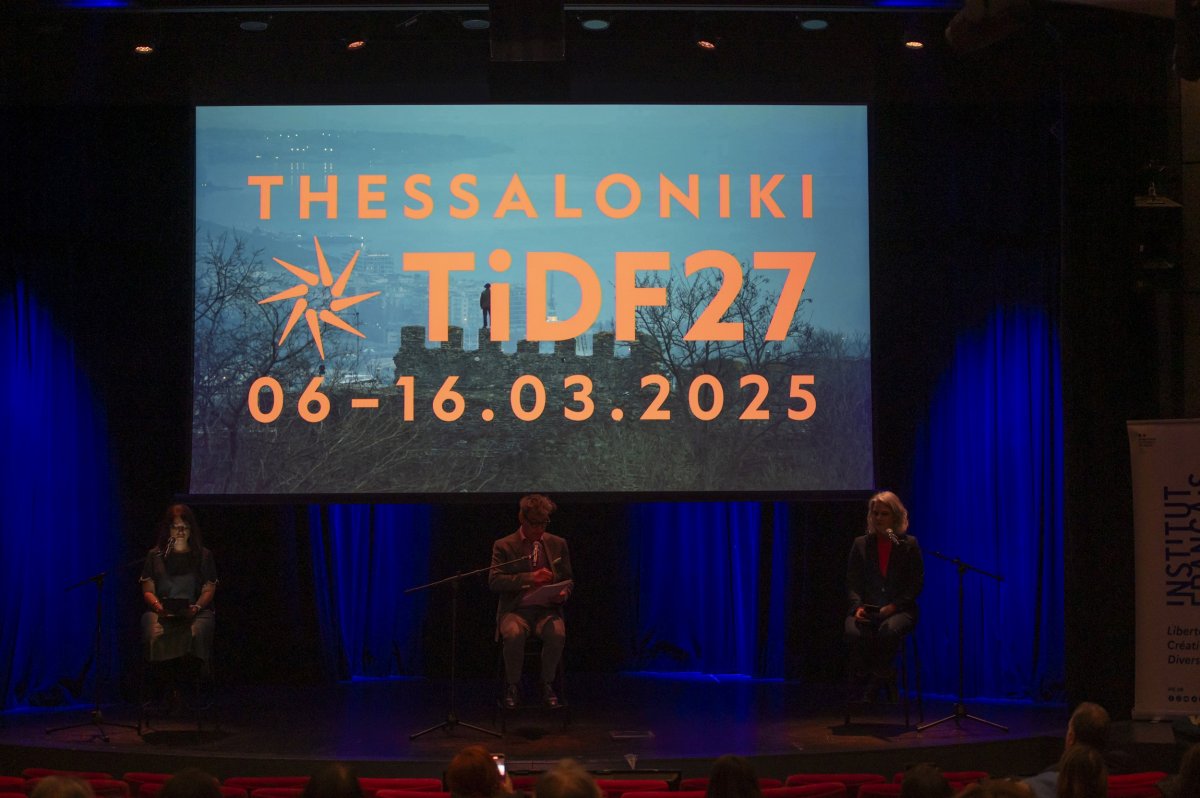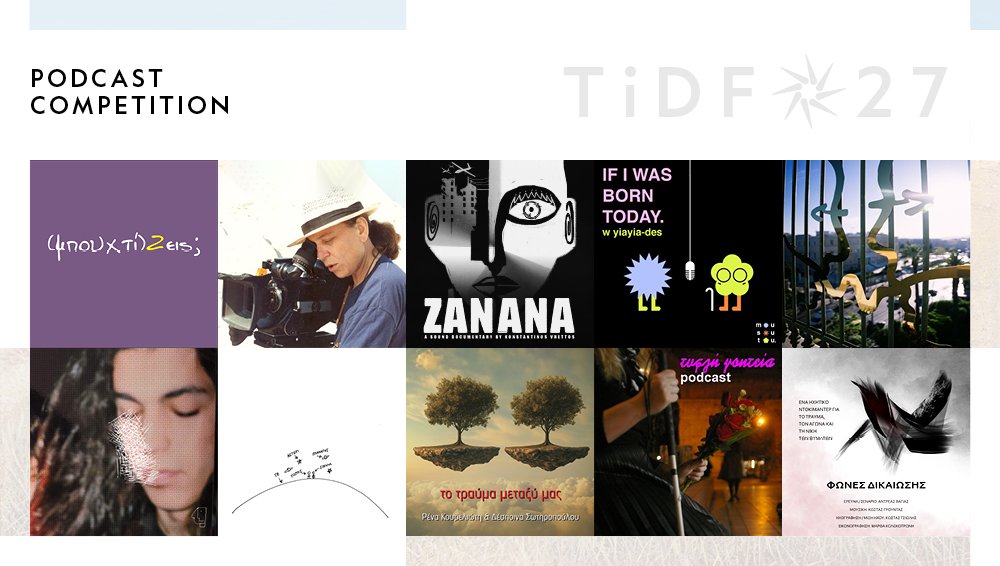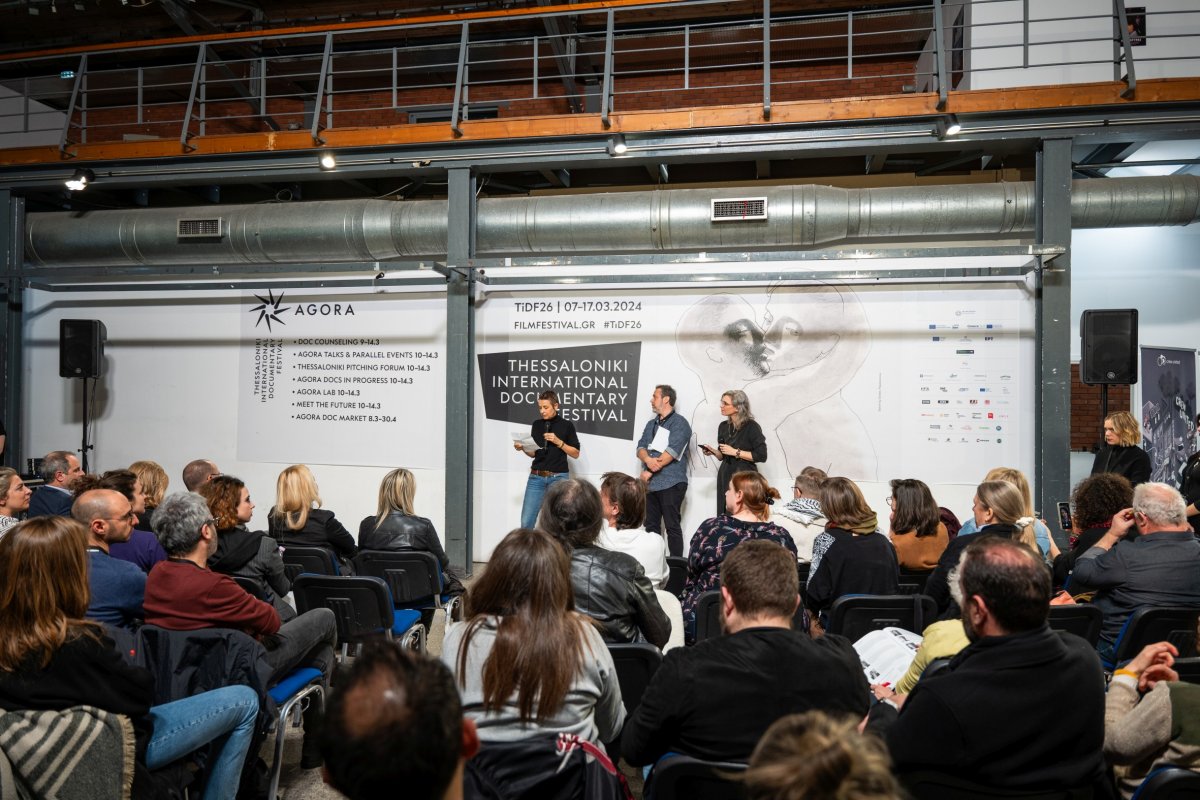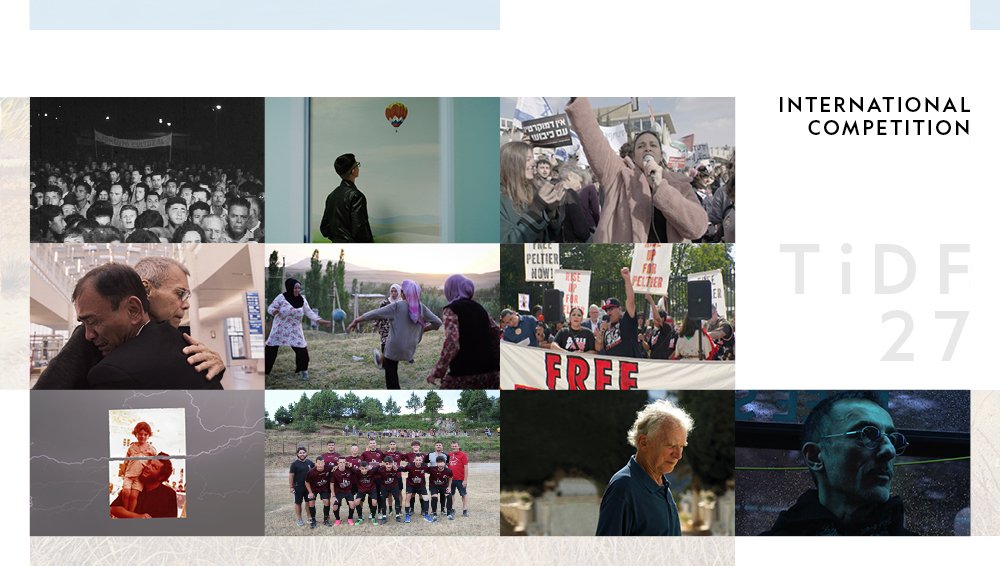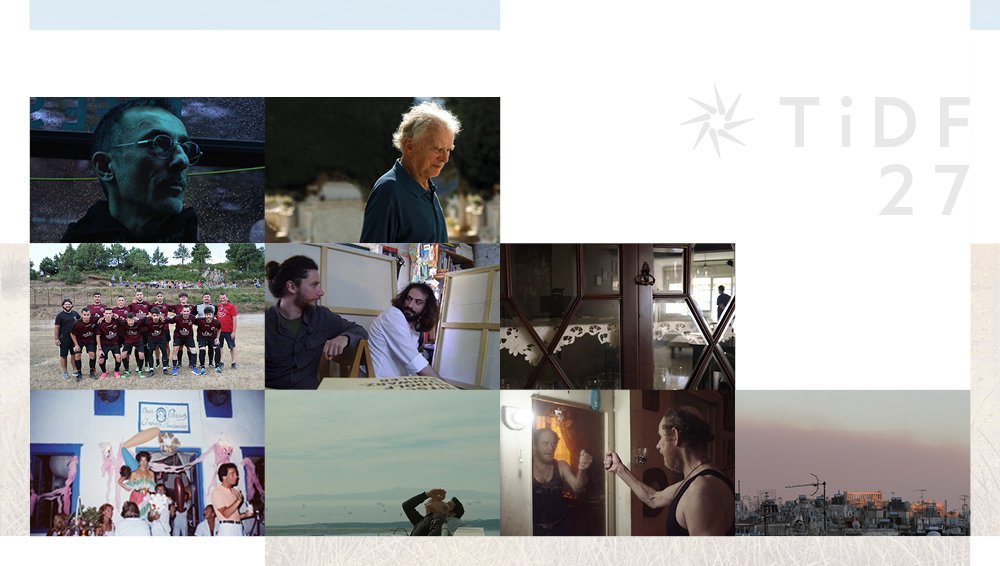“Distributing a filmmaker’ s documentary - a case study of I Am Breathing with Ben Kempas” was the masterclass that took place on March 20, 2014 at the John Cassavetes theatre in the context of the Docs in Thessaloniki - Pitching Forum 2014 of the 16th Thessaloniki Documentary Festival.
The masterclass, which was co-organized with the European Documentary Network (EDN), was presented by producer for marketing and distribution at the Scottish Documentary Institute Ben Kempas, who is also in charge of distributing and marketing the acclaimed documentary I Am Breathing.
Ove Rishoj Jensen, Web Editor & Film Consultant at EDN, coordinated the masterclass. Emma Davie, who co-directed I Am Breathing with Morag McKinnon, was present.
Ben Kempas shared the strategies and tools than can help a film find a wider audience. He presented, step-by-step, the process of doing that in the case of I Am Breathing. The film’s marketing strategy focused on Global Screening Day, a big experiment of participatory distribution, consisting of more than 300 actions in 40 countries. Mr Kempas also discussed the issues of cooperating with multiple partners, developing a “portable funding platform” for community screenings and donations, building and managing supporter groups beyond the social media, and the latest innovations in film distribution systems.
As Mr Kempas noted in his introduction, it is difficult for filmmakers to take on the additional role of producer, and handle marketing and distribution. He added, however, that there are now online tools available which allow the audience to give feedback throughout the filmmaking process. As a result, when the film is complete, it already has supporters’ groups in place that will ideally follow the filmmaker to his next project. As a specialist in distribution and marketing, Kempas always tries to find new strategies of approaching the audience and encouraging audience participation. “All of us have Facebook profiles, but the important thing is to have a platform where you can control your audience directly, without depending on third parties,” said Mr Kempas, giving the examples of NationBuilder and Distrify.
NationBuilder, Mr Kempas explained, is even used as political campaign software. The platform allows users to merge friends and followers from other platforms —for example Wordpress, Facebook, Twitter and MailChimp- and organize their audience into different categories: followers, potential volunteers or potential backers. “This software can prove useful to filmmakers who want to map the viewers of their page, whether they have downloaded their film or other films, the tags they use, etc. It is a powerful data collection software program, and directors should be careful, because they are the ones controlling all the data.”
Distrify is a platform with a media player that helps filmmakers sell their films, giving potential customers the choice of renting or buying them in various film qualities. The player can be embedded in other social networks. “This allows filmmakers to give the audience a taste of their film, inform them about the film’s release date, check out buyer profiles and provide information about screenings. YouTube does not offer this service, since there is no way of knowing who has clicked on the ‘thumbs up’ button,” said Mr Kempas. He explained that the two platforms can even work together, so that every user registered at Distrify automatically appears in the NationBuilder system.
Mr Kempas then presented the documentary I Αm Breathing as a case study. The film went viral thanks to the social media and specialized internet software. The documentary tells the story of 33-year old Neil Platt, who was paralyzed from the neck down due to ALS/MND, also known as Lou Gehrig’s disease. British scientist Stephen Hawking is also diagnosed with the same disease.
When filming started, Neil, who had also lost his father to ALS, had just six months to live. His wish was to devote the remainder of his life to raising audience awareness and securing donations for research and treatment. He built an extensive network of friends through his blog and asked filmmakers to tell his story. “In the end, the community that grew around the documentary became an extension of the film itself,” commented the director Emma Davie.
After screening part of the documentary, Ben Kempas analyzed his multidimensional marketing strategy. Since the budget could only cover production expenses, the team behind the film decided to approach people related to the disease, including relatives of patients, medical experts, research institutes and charities. One such charity suggested a global screening of the film on June 21st, the global day of ALS/MND recognition.
Furthermore, the film received funding from the Digital R&D Fund for the Arts, which supports collaboration between art, technology and research organisations to develop a player that would allow the audience to make contributions, using the familiar concept of crowd-funding. “We thought about giving a cut to everyone who embedded the player in their website thereby promoting the film. We also wanted to give immediate rewards to backers in the form, for example, of previous films of ours, posters or different film download qualities depending on whether the backer had simply downloaded the film or ordered the DVD.”
The team also used the NationBuilder platform, “to collect information about people working in organizations related to the disease. Chain-mailing with people from around the world allowed us to identify 300 individuals who could screen the film in a theater, in private screenings or anywhere else. Our goal was to maximize the number of screenings that specific day.” The internet campaign was complemented by more traditional promotion strategies in the media and the festival circuit. “The film had already been screened in Edinburgh and London, so we had the chance to promote it in the media as well. Reporters were given a chilling story, while Neil’ s wife also helped by giving interviews to a number of magazines, newspapers and TV programmes,” said Emma Davie.
In the discussion that followed, the audience had a chance to talk with the panelists about a number of issues, such as the cost and uses of different promotion platforms, the most effective techniques for attracting and maintaining audience interest and crowd-funding.




